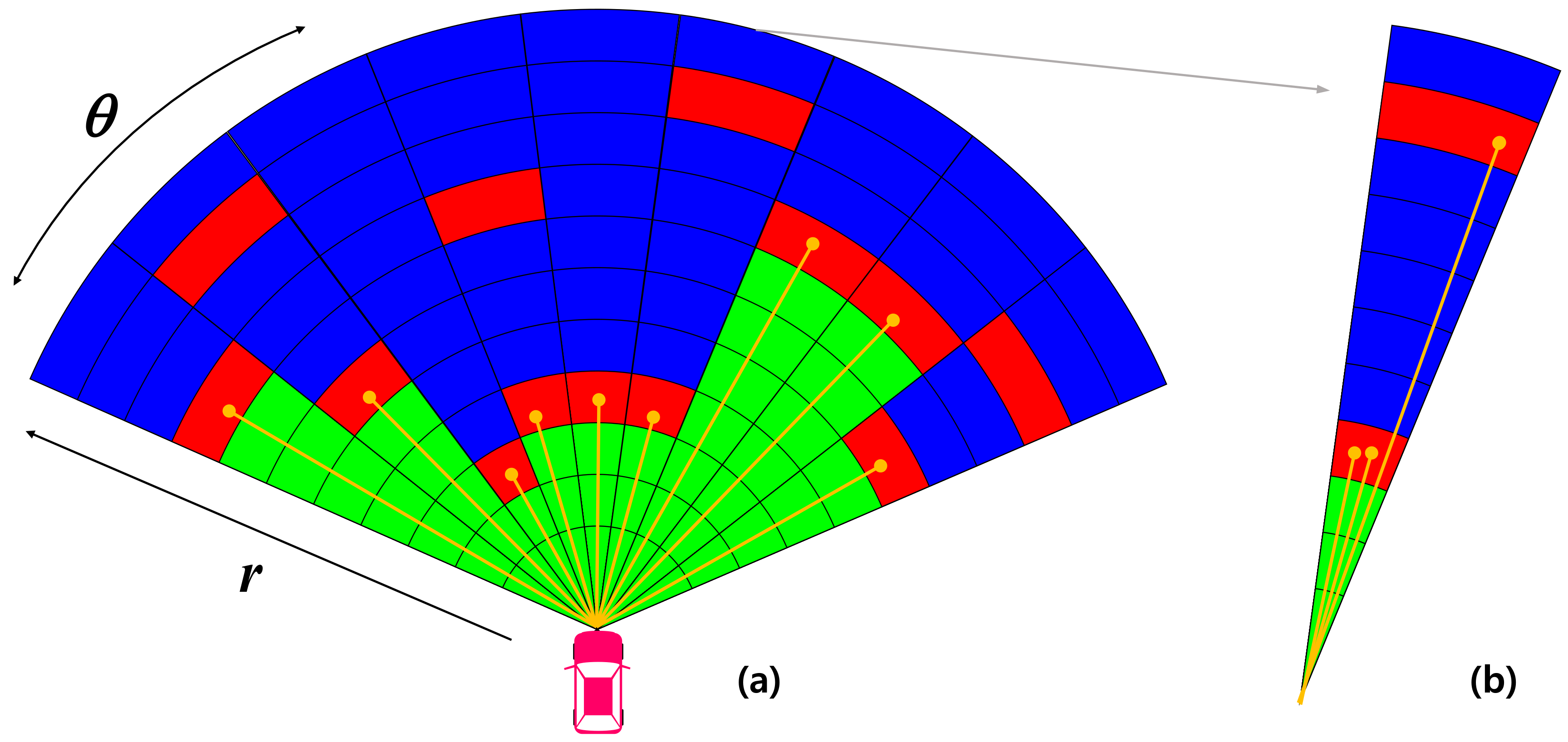
In this example, you represent the surrounding environment as a dynamic occupancy grid map.

A hybrid of these two approaches is also possible by extracting object hypothesis from the grid-based representation. The grid-based representation is also less sensitive to imperfections of object extraction such as false and missed targets. On the other hand, a grid-based approach allows for an object-model-free representation, which assists in efficient collision-checking in complex scenarios with large number of objects. It also allows for an easier way to define inter-object relations for behavior prediction. For planning algorithms, the object-based representation offers a memory-efficient description of the environment. The choice of environment representation is typically governed by the upstream perception algorithm. In the presence of dynamic obstacles in the environment, a local motion planner requires short-term predictions of the information about the surroundings to assess the validity of the planned trajectories. We provide both quantitative and qualitative insights into the predictions and validate our choices of network design with a comparison to the state of the art and ablation studies.Discrete set of objects in the surrounding environment with defined geometries.ĭiscretized grid with estimate about free and occupied regions in the surrounding environment. We also design a navigation pipeline that uses these predicted SOGMs. The network is composed of a 3D back-end that extracts rich features and enables the semantic segmentation of the lidar frames, and a 2D front-end that predicts the future information embedded in the SOGMs within planning. Our pipeline is entirely self-supervised, thus enabling lifelong learning for robots. We design a 3D-2D feedforward architecture, trained to predict the future time steps of SOGMs, given 3D lidar frames as input.


We build on prior work to annotate lidar points based on their dynamic properties, which are then projected on time-stamped 2D grids: SOGMs. Our automated generation process creates groundtruth SOGMs from previous navigation data. We present a novel method for generating, predicting, and using Spatiotemporal Occupancy Grid Maps (SOGM), which embed future information of dynamic scenes.


 0 kommentar(er)
0 kommentar(er)
